- Home
- Neal Asher
Zero Point (Owner Trilogy 2) Page 9
Zero Point (Owner Trilogy 2) Read online
Page 9
A muttered response arose to that, probably, Saul reckoned, from those who had yet to have their implants removed, though he did not now have the resources to check on that.
Hannah continued, ‘I’ve since tested all the ID implants previously removed aboard this station, along with those kept in stock. I found only one that was without the biochip and that came from Technical Director Le Roque, and it was the only ID implant more than fifty years old. This discovery is why, I hasten to add, we’ve speeded up the implant removal programme and now made it compulsory.’
‘What activated the biochips in this way?’ asked Girondel Chang.
‘Good question. They were activated by a signal code specific to each chip.’ Hannah paused. ‘It was probably sent months ago but since then has continued to propagate in computer systems on Earth and throughout the solar system. It only got through to us here after we shut down the EM shield.’
‘But why?’ asked Brigitta Saberhagen.
‘Let me . . . answer that,’ said Saul, then began another prepared speech: ‘From the data we’ve been able to obtain thus far, it seems these biochips were devised as a radical alternative to sectoring, but whoever created them has now also used them in a bid for power on Earth. All but one of the surviving delegates on Earth is now dead. Those who died here on the station were the only delegates still carrying implants. The surviving delegate on Earth, one Serene Galahad, ran the centre for implant research in Britain and the biochip industry all across Earth. She is now claiming that the massive death toll was caused by a rebel-manufactured plague called the Scour.’
‘Massive death toll?’ someone asked.
His tone flat, Saul said, ‘All zero assets with implants, which means ninety-eight per cent of them.’
Right on cue, Le Roque magnified the picture on the screen down towards that South American coastline. In from the shore the regular structure of the sprawls now became evident, while offshore a large half-moon island became visible.
‘The island,’ said Saul, ‘was not there three months ago, but it was not the result of volcanic activity. It is now breaking up, but was previously a floating mass five kilometres long and two wide. The pictures you will now see are from a month and a half ago. Give us that fish-farm cam image, Le Roque.’
A wall of rotting human corpses flashed into view, two metres tall, all tangled together, and crawling with flat white crabs. The view retreated to give the whole horrible panorama, seagulls circling above it like vultures.
‘You’re seeing just a small portion of it here. We estimate, just guessing how many were under water, that this one island consisted of fifty million corpses. There were, and still are, masses like this offshore along just about every coastline on Earth. That is one method of disposal this Serene Galahad ordered to be employed, but there’s more.’
Another view now: a mountain of corpses with roads heading up the sides, up which earth-moving equipment trundled to deposit yet more corpses.
‘Another old clip,’ Saul noted, ‘because as the corpses started to liquefy, her people started losing earth-moving equipment.’
Now a fire belching clouds of smoke into which massive grain conveyors fed a steady stream of the dead, now mostly just rags and bones.
‘This is a current video. This fire has been burning for the best part of three months.’ He paused for a second. ‘A lot of the pyres are going out now, but the skies are still yellow all across Earth and every rainstorm is black, either from the smoke or from trillions of dead flies.’
He’d now said enough. In complete silence, the people in Tech Central had watched the parade of horrifying images. Finally someone spoke up, his voice catching.
‘How many?’ asked Langstrom.
‘Just under eight billion,’ Saul replied and wondered if, even with his mind operating to its full capacity, he could ever truly comprehend such a figure. He also wondered how Earth’s history would remember him, since it seemed this Serene Galahad was claiming that he had actually caused this plague, this worldwide slaughter.
Saul now drifted away, disconnecting from the cam and from the intercom, his mind feeling like the air hollows in a nautilus’s shell, reality slipping away into a dream state. I’m dying, he thought, as if to test the words. I’m dying again.
Mars
Another one, thought Var, as she quickly pulled on her clothing. The disease had hit very fast and killed eight people. Chief Medical Officer Da Vinci had the virus identified as some form of Ebola, but hadn’t committed himself beyond that. In response, Var had ordered the imposition of the virus protocols established under Committee rule. That meant relevant areas were quarantined and disinfected. The personal effects of those who died were placed outside, where the Martian atmosphere would effectively sterilize them, and their bodies were buried outside too. Ultraviolet lights were left on permanently throughout the base, alcohol-based hand-cleaner units placed everywhere, teams constantly cleaning and sterilizing. The community room had been closed in order to minimize human contact, and constant blood tests and physical scans were ongoing. And yet now – after three months and just when Var was relaxing the strictures – another death.
Once dressed, Var headed out of her cabin. Perhaps she should not have considered the results from the blood tests a good enough reason to start opening things up again. Da Vinci had convinced her otherwise, however. In his estimation, the chances of the disease spreading now, after so much time, were very low, but the detrimental effects of keeping the gym closed were quickly becoming evident. The low gravity of Mars simply wasn’t enough to sustain bone growth and muscle mass. Base personnel needed resistance exercises and their regular time in the spinner.
One of Martinez’s men stood guard directly ahead, behind a hazard tape, while twenty metres further along another stood ready behind another tape. They were both armed, which was surprising, but not half as surprising as seeing the corridor still open and no infectious-disease protocols being immediately employed. The two should be wearing hazmat suits, the corridor should have been sealed off with sheets of plastic, and a pressure differential applied. There should have been a suit here waiting for her, too. She was about to question the guard nearest about this, but then realized she might be mistaken. When Lopomac called her he had said, ‘We’ve got a death.’ He hadn’t used the word ‘another’, nor had he mentioned the virus.
Var ducked under the tape, headed straight over to the door leading into the gym, opened it and entered. Amidst the various weight-training and CV machines, Martinez, Lopomac and Da Vinci stood gazing down at a body bag lying on an exercise mat, while Da Vinci’s two assistants were unfolding a gurney nearby. Over to one side stood the spinner, a five-metre-diameter cylinder ten metres long, driven by big electric motors to wind it up to sufficient speed for those who had entered it to experience up to two Gs. It was standing still – all exercise suspended for today.
‘What have we got here?’ she asked, striding forward.
The three exchanged furtive glances, and Lopomac finally said, ‘What do you think, doctor?’
Da Vinci grimaced and kept his eyes down. ‘I won’t give an opinion until I’ve done an autopsy.’
‘Seems quite simple to me,’ said Martinez. ‘He did something stupid in the spinner and broke his neck. That doesn’t require an autopsy.’
There was something odd going on here, and Var felt uneasy. She prided herself on being able to assess any situation quickly and find the right response. It seemed almost as if Martinez and Lopomac were bullying Da Vinci, and he was having none of it. The three now moved back as the two assistants stepped in and picked up the body to load it on the gurney.
‘Let the doctor conduct an autopsy,’ said Var. ‘We should investigate this rigorously – I’ve never heard of anyone getting killed in a spinner accident.’
‘We’re all suffering bone depletion,’ said Lopomac, ‘so it doesn’t seem that unlikely to me.’
She gazed at him for a second, findin
g she couldn’t read his bland expression, then turned back to Da Vinci. ‘Do you have suspicions?’
The doctor raised his head and gazed at her almost defiantly. ‘Yes, I have my suspicions,’ he said. ‘I’m a little baffled as to how a man could have sustained such a severe break inside a smooth cylinder.’
‘It was up to the two-G setting,’ observed Lopomac.
Da Vinci rounded on him. ‘It would be convenient for people to think that. Maybe someone killed him out here, then threw him into the spinner and set it on two Gs just to make it look like an accident.’
‘This must be investigated,’ repeated Var, ‘and thoroughly.’
She stepped over to the gurney. Even though this might be murder, she was quite relieved it wasn’t another Ebola death. Murderers could be found and punished and, since the number of suspects available here was extremely limited, and generally their locations were known, she didn’t think this would be so difficult a case to solve. In a way she quite welcomed the distraction. She reached down and unzipped the top of the body bag, turned the head inside it to face her, then found her heart hammering in her chest as a whole new set of calculations began running inside her skull. She realized that, from the moment she had stepped in here, she had not asked them who was dead. That would look bad. She also now understood the odd reactions of those already here.
‘Delaware,’ she said. ‘Now that’s awkward.’
‘Or convenient,’ said Da Vinci, ‘depending on your perspective.’ He headed for the door, beckoning his assistants after him. One of them reached out and zipped up the bag, then they followed, heads ducked as if trying not to be noticed.
Var hesitated. Should she stop them leaving? Should she lock down on this? She knew well enough that honesty and truth would play no part in what would ensue; people tended to believe what they wanted to believe, and now everyone in Antares Base knew about the dressing-down Rhone had given Delaware and Christen – the two from Mars Science who had been plotting to unseat her. She did nothing, however, and the door closed behind the gurney.
‘Who killed him?’ Var asked, without turning.
‘It was an accident,’ said Lopomac. ‘Da Vinci won’t be able to prove otherwise.’
Var rounded on him. ‘Did you kill him?’
Lopomac looked surprised and baffled, which meant he was innocent of the crime, or a very good liar.
‘What about you, Martinez?’ she asked.
Standing with his arms folded, the man shook his head briefly. ‘If you’d asked me to make him have an accident, I wouldn’t have been this sloppy. More likely one of his suit seals would have given out while he was outside.’
‘Then you didn’t kill him?’ Lopomac asked her.
‘No, I didn’t,’ Var replied. ‘And if neither of you two did, then that leaves us with a problem.’
They were gazing at her doubtfully, judgement reserved, and she imagined that they were reading a similar expression on her face, too. What to do now? If she didn’t investigate this, then it could poison this entire base, yet how could she spare resources for an investigation when they were still on the edge of survival? And, more importantly, if they did find out who had done it, what then? Whoever did it would have to be killed, since they could not spare the resources for imprisonment either. And she could not afford to lose either Martinez or Lopomac, if it turned out to be one of them.
‘Perhaps Delaware and Christen had a falling out,’ suggested Lopomac.
Now there was an option: two birds with one stone. However, no one would believe the convenience of that, and no one would believe a diminutive woman like Christen to be capable of breaking someone’s neck.
‘No,’ said Var firmly. ‘You, Martinez, will assign one of your men to this. I want everyone located in the relevant timeframe, and I want people questioned. Meanwhile we’ll see what Da Vinci comes up with. Maybe it was merely bone weakness.’ It seemed a vain hope.
‘Okay,’ said Martinez, quickly heading for the door as if he wanted to be gone.
After it closed behind him, Lopomac asked her, ‘You really didn’t kill him or have him killed?’
‘I’m not a savage,’ said Var, well aware that many on the base wouldn’t believe that.
‘Then perhaps we need to consider just how inconvenient a death this is for you.’
Very true, Var felt, the image of Rhone of Mars Science coming to the forefront of her mind. But she mustn’t leap to conclusions. Just maybe someone had decided to ‘rid her of that troublesome priest’, because too much loyalty could be a penalty of leadership too.
‘And you didn’t kill him?’ she repeated, for confirmation.
Lopomac shook his head. ‘I’m with Martinez on that. If I’d done it, there would have been no body to find.’
‘Okay,’ said Var, considering how frangible a thing loyalty could be, and how easily it could be faked.
Earth
In the three months since it struck, ‘the Scour’ had gained currency as an epithet all across Earth, and this particular period of time they were calling the ‘Year of the Flies’. Much organization had been required to deal with its fallout, and so Serene had appointed four hundred delegates to govern the regions of the planet. However, already fifty-eight of her appointees were proving treacherous.
‘I’ll need confirmation sent to my palmtop within the hour,’ she said, as she gazed ahead – through the high-security fences, past the readergun towers, inducer emplacements and across the minefield – towards this surviving twenty square kilometres of Tuscan countryside.
‘It’s on its way to you now,’ Clay replied. ‘They are the ones who set up the laboratory and had recent Scour victims transported there. They staffed the place with scientists kidnapped from our Nanking factories, and diverted resources to it from West China Region’s disposal budget.’
Still the business of sanitizing the planet was continuing, still some fires were burning, and still the befouled earth-movers were dumping their loads in the sea or carrying them to mass graves extending kilometres across. In cold regions the corpses were still intact, in hot and damp regions they were little but bones and clothing, and in desert areas they were dried-out husks. But they all had to go because now they were causing death tolls among the surviving population: thirty million from cholera when a large portion of the North American water table became contaminated; fifty million from Ebola – a cross between the manufactured version and the old original; another twenty million from a resurrected form of the Black Death spread by fleas on the backs of rats, whose populations were so vast now that they swarmed like locusts all across Africa; and a further total of over a hundred and fifty million from other diseases too numerous to count. These tolls were in addition to the deaths caused by the crashed infrastructure; or regional conflicts where Serene had not been able to establish her control quickly enough, and often where the revolutionary council was trying to establish a foothold; besides regional conflicts she ended by tactical nuke. But this was all good, she felt, since, for her purposes, the human population needed to be much smaller – the only irritation being that some useful people were dying, too.
She checked her palmtop as the file came through, and immediately fed it to a program that would check it against other reports she had received from sources other than Clay and his people. Then she looked up at the two armoured vehicles and security van ahead of her limousine as they drove through the gates into Alessandro Messina’s private estate, and her driver followed them.
‘The laboratory?’ she enquired of Clay.
‘When they knew we were closing in, they locked the staff inside and used an incendiary, but by then we’d already got into their computers and copied their files. The evidence is secondary – since none of the fifty-eight would put their name to anything – but it’s firm.’
‘So they were trying to isolate the Scour and turn it into a bioweapon?’ she said.
‘So it would seem,’ Clay replied carefully.
&nbs
p; Had she detected something in his voice? Did he know the real aim of that laboratory? When she had first received the report, it was obvious to her that the delegates concerned had been trying to nail down exactly what the Scour was and where it had come from. This she simply could not allow.
Soon her limousine, with its protection team ahead, its motorcycle outriders, and two armoured buses of her staff and then two more armoured cars behind, was motoring down a road seeming transplanted from another century. Maybe, just maybe, even more of Earth could be returned to a similar state. Already she was receiving reports of the benefits resulting from the Scour’s massive death toll.
The seas of the world that were not dead, or in the process of dying, at first extended their coastal dead zones by between ten and twenty kilometres, after having four billion corpses dumped into them. Now they seemed to have picked up after that large protein injection, and then benefited from a massive reduction in the flow of effluent, chemical fertilizers, industrial waste and, apparently, from an increase in sunlight and thus in temperature. Even though some pyres were still burning, because of the eighty per cent reduction in industrial and transport pollution, the world’s air was cleaner than before.
Serene herself had gazed in wonder at videos of enormous shoals of crustaceans like shrimps and krill, then only a few months later at ten square kilometres of sea boiling with squid. She had been told that already plankton levels were higher than they had been in fifty years and that fish stocks, breeding from those escaped from the fish farms, were on the increase. Unfortunately, only a genetic laboratory might be able to bring back now extinct species like the tuna or the grey whale.
‘Keep me apprised of any further developments,’ she told Clay, and cut the connection.
Other benefits were becoming evident on land. With the world population now standing at only about nine and a half billion, with vast areas of sprawl unoccupied and agricultural output scaled back, large swathes of land were blooming. Whole fields, tens of kilometres across, had been left fallow and were sprouting weeds, in some places biofuel crops were growing beyond the point where the harvesters could harvest them, and forests of bamboo and willow were stretching for the sky. In the sprawls, tough GM beans and soya were starting to crack through the carbocrete and thus give access to sunlight to other less hardy wild varieties. In one such sprawl, in the East European Region, someone had even reported seeing a roe deer, though that had yet to be confirmed. Upon learning of all this, Serene had ordered the planting of Gene Bank seed stocks of wild plants, and in Britain the first oaks for a hundred years were starting to grow. However, only after doing this did she learn that while some seed stock was still available, the bulk of the genetic stocks were gone, along with the Gene Bank database. They had been transported to Argus Station not long before that station departed Earth.

 The Bosch: A Novella (Polity Universe)
The Bosch: A Novella (Polity Universe)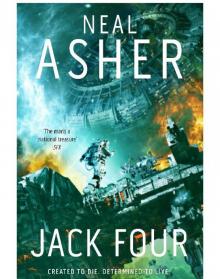 Jack Four
Jack Four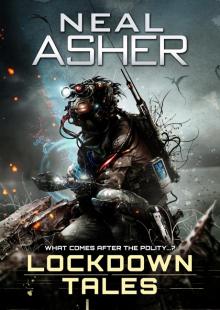 Lockdown Tales
Lockdown Tales The Warship
The Warship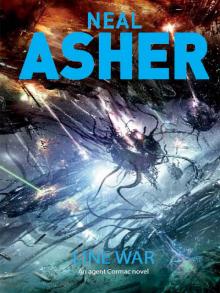 Line War
Line War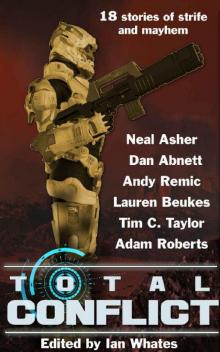 Total Conflict
Total Conflict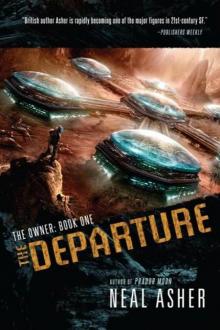 The Departure
The Departure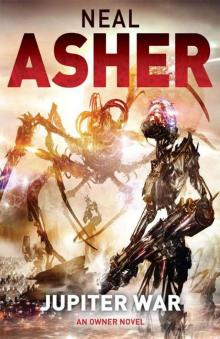 Owner 03 - Jupiter War
Owner 03 - Jupiter War Polity Agent
Polity Agent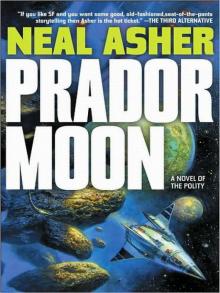 Prador Moon
Prador Moon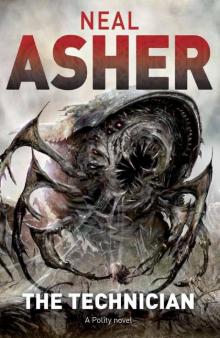 The Technician
The Technician Hilldiggers
Hilldiggers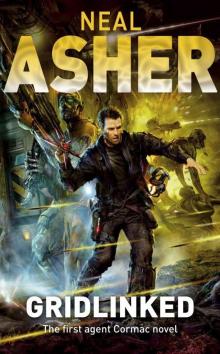 Gridlinked
Gridlinked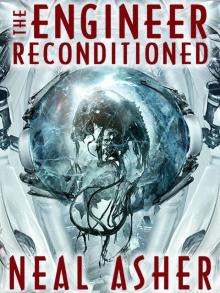 The Engineer ReConditioned
The Engineer ReConditioned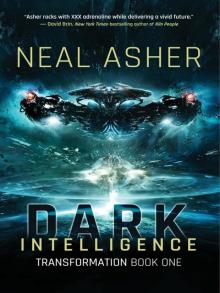 Dark Intelligence
Dark Intelligence The Soldier: Rise of the Jain, Book One
The Soldier: Rise of the Jain, Book One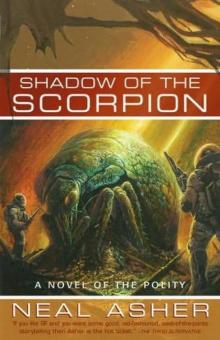 Shadow of the Scorpion p-2
Shadow of the Scorpion p-2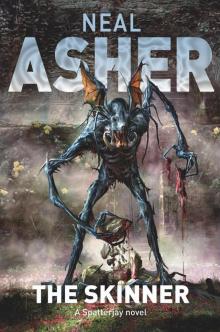 The Skinner
The Skinner The Soldier
The Soldier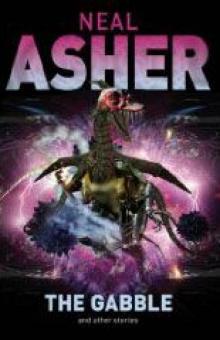 The Gabble p-13
The Gabble p-13 The Gabble and Other Stories
The Gabble and Other Stories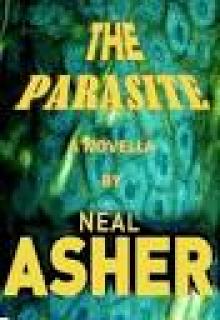 The Parasite
The Parasite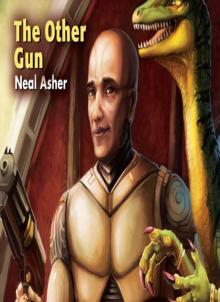 The Other Gun
The Other Gun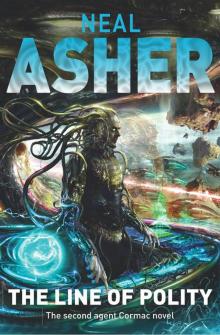 The Line of Polity
The Line of Polity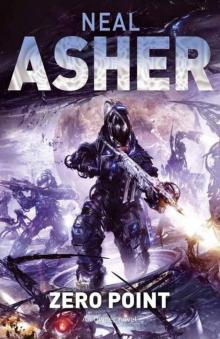 Zero Point (Owner Trilogy 2)
Zero Point (Owner Trilogy 2)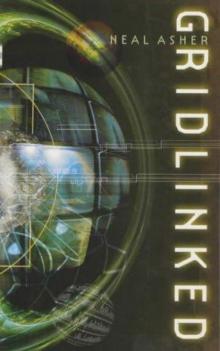 Gridlinked ac-1
Gridlinked ac-1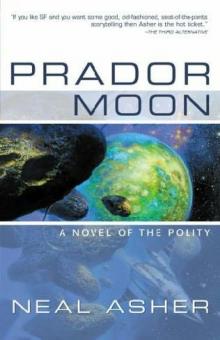 Prador Moon p-1
Prador Moon p-1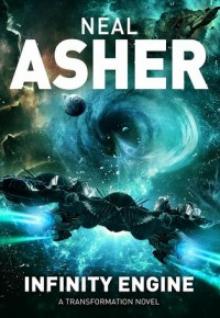 Infinity Engine
Infinity Engine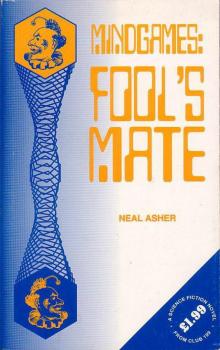 Mindgames: Fool's Mate
Mindgames: Fool's Mate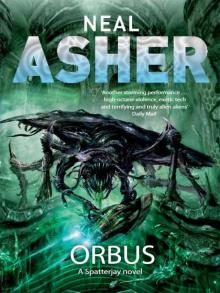 Orbus
Orbus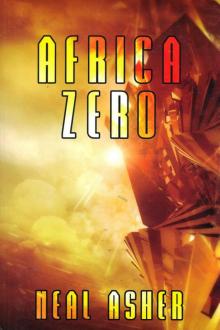 Africa Zero
Africa Zero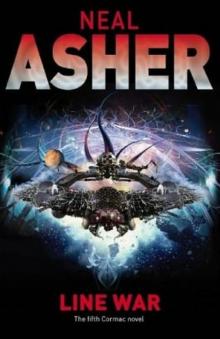 Line War ac-5
Line War ac-5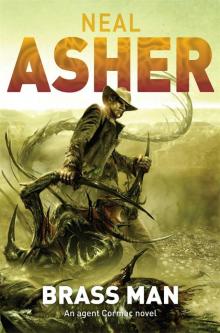 Brass Man
Brass Man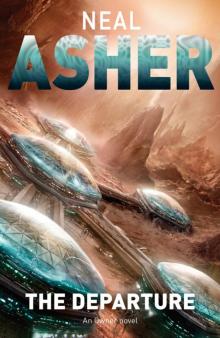 The Departure to-1
The Departure to-1 Cowl
Cowl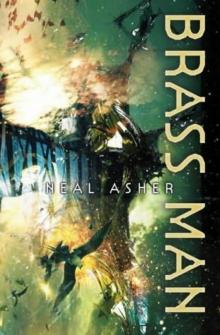 Brass Man ac-3
Brass Man ac-3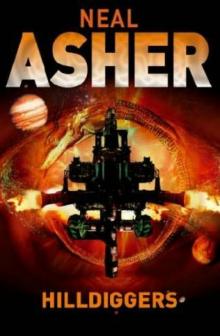 Hilldiggers (polity)
Hilldiggers (polity)![Greg Bear - [Eon Trilogy 1] - Eon (rescan) (v1.0) Read online](http://i1.bookreadfree.com/i2/04/08/greg_bear_-_eon_trilogy_1_-_eon_rescan_v1_0_preview.jpg) Greg Bear - [Eon Trilogy 1] - Eon (rescan) (v1.0)
Greg Bear - [Eon Trilogy 1] - Eon (rescan) (v1.0)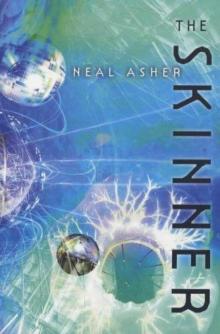 The Skinner s-1
The Skinner s-1 The Voyage of the Sable Keech s-2
The Voyage of the Sable Keech s-2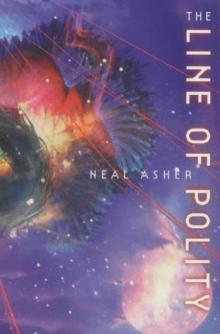 The Line of Polity ac-2
The Line of Polity ac-2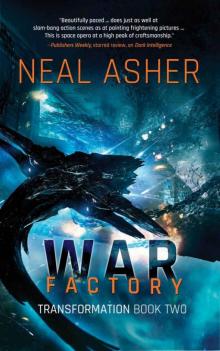 War Factory: Transformations Book Two
War Factory: Transformations Book Two Polity Agent ac-4
Polity Agent ac-4